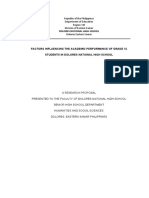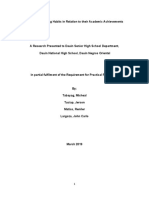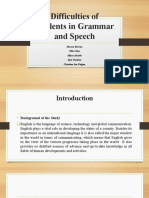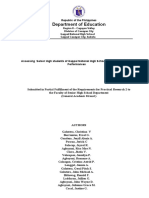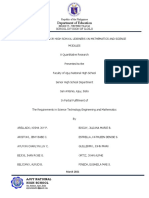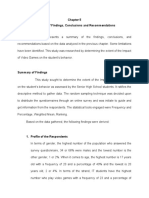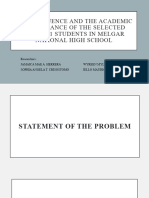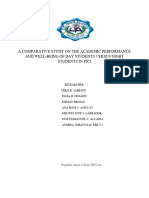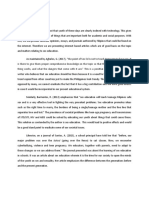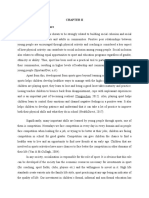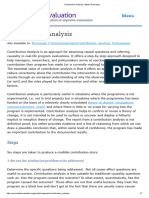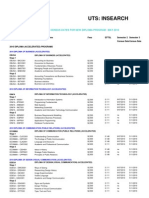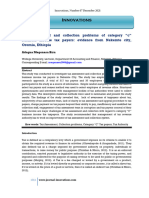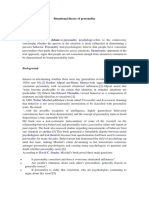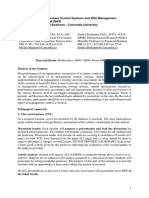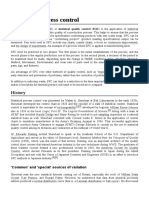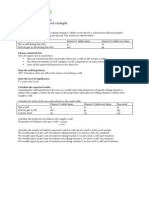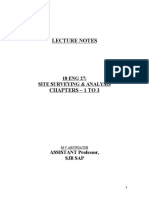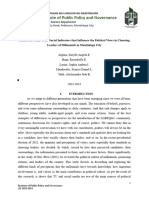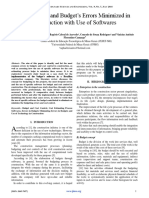CHAPTER III
METHODOLOGY
This chapter reveals the methods of research to be employed by the researcher in conducting the
study which includes the research design, population of the study, research instrument and its
development establishing its validity and reliability, data gathering procedures, and the
appropriate statistical treatment of data
Research Design
This study was made by the means of quantitative methods of researcher. The researcher
attempted to get the answers to the aforementioned problem and to justify and satisfy the
objectives of the study. Likewise, it also attempted to know the different impact to their life
style.
According to Sis International Research (n.d.) quantitative research is a structured way of
collecting and analyzing data obtained from different sources. Quantitative research involves the
use of computational, statistical, and mathematical tools to derive results. It is conclusive in its
purpose as it tries to quantify the problem and understand how prevalent it is by looking for
projectable results to a larger population.
Qualitative research is generally more explorative, a type of research that is dependent on the
collection of verbal, behavioral or observational data that can be interpreted in a subjective
manner.
The Respondents of the study
The respondent of the study is composed of people in the community of Lipa City year 2018.
One of the vital processes to keep this study successful. All of these participants was selected
through random sampling. This sampling method is conducted where each member of a
population has a capability to become part of the sample.
The chosen respondents are containing of eighty (80) respondents from selected barangay in
Lipa City. The Barangay of Bolbok, the Barangay 8, Barangay 11, and the Barangay 5. Those
barangay was chosen by the researchers because they are suitable and applicable to the study
Research instrument
The questionnaire was used as the main data-gathering instrument. The instrument to be prepared
focused on answering the statement of the problem. The positive and negative impact of Oplan
Rody. The questionnaire contains of forty (40) questions. The questionnaires will be distributed
to the respondent.
The date gathering instrument was structured as a scale ranging from 1-4. Where in the (1) is
strongly disagree, (2) is disagree, (3) is agree and the last one is (4) strongly agree. This legend
will help the researchers to analysis the result of conducting date-gathering.
Data Gathering Procedure
After establishing the validity and reliability on how gather-data, formulating questions
appropriate for the study and all doing necessary modification to the chosen respondent. Eighty
�(80) copies of questionnaires distributed will be successfully completed and returned. Thus their
corresponding answer to the question are kept in accordance with the agreement of the
respondents and the researchers.
The date gathered was organized and tabulated according to the result of the statistical treatment
done. In this stage, the service of a statistical consultant was needed.
Statistical Treatment of the Data
To analyze and Interpret the data, the researcher employed the following statistical procedure:
1. Frequency, percentage and ranking
Will help the researcher to easily tally the date that they gathered. This percentage and ranking
will a big help in the researchers to analysis the date.
2. Frequency, weighted mean and ranking.
Weighted Mean. This tool was used to provide answer to the questions. The formula is:
Where:
WM = weighted mean
X = number of respondents
F = weight given to each respondent
N = number of cases
Data Analysis Plan
Using the data garnered, data analysis plan would encompass a number of procedures leading to
the findings or the result of the study about the Impact of Oplan Rody, the procedures to be
observed are as follow:
1. Summarizing the numerical data. This would be done through a tally that will be based on the
certain answer of the respondent in the survey questionnaires using frequency and percentage.
2. Mathematical/Statistical Interpretation of the summarized data using the weighted men and
ranking.
3. Verbal Interpretation of the produced outcome will be determining the hypothesis of our topic. Is
there significant effect in the implementation of Oplan Rody to the behavior of local community in Lipa
City and are there no significant effects in the implementations of Oplan Rody to the behavior of local
community in Lipa City. Like a scale type questionnaire was used by the researchers it used a 4-point
scale, in which point correspondents.
Legend Scale Interpretation
P
Sc
oi
al
n Verbal Interpretation
e
ts
� 3.
50
4 -
4. Strongly Agree
0
2.
50
3 -
3. Agree
49
1.
50
2 -
2. Disagree
49
F
or 1.
m 00
ul -
a 1.4
U 9
se
d Tr
in eat
in
1 g
W th
h e
er da
e: ta
ga
th
er
ed
:
x̅ = weighted mean
x = total number pf respondents per question
�N = total number of respondents
W = respective legend point (4, 3, 2, 1,)

